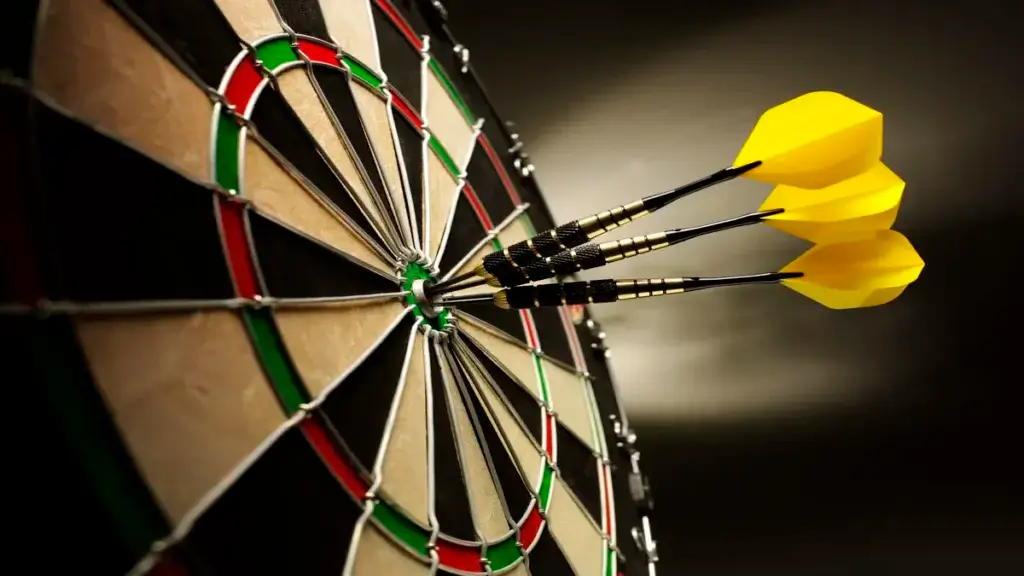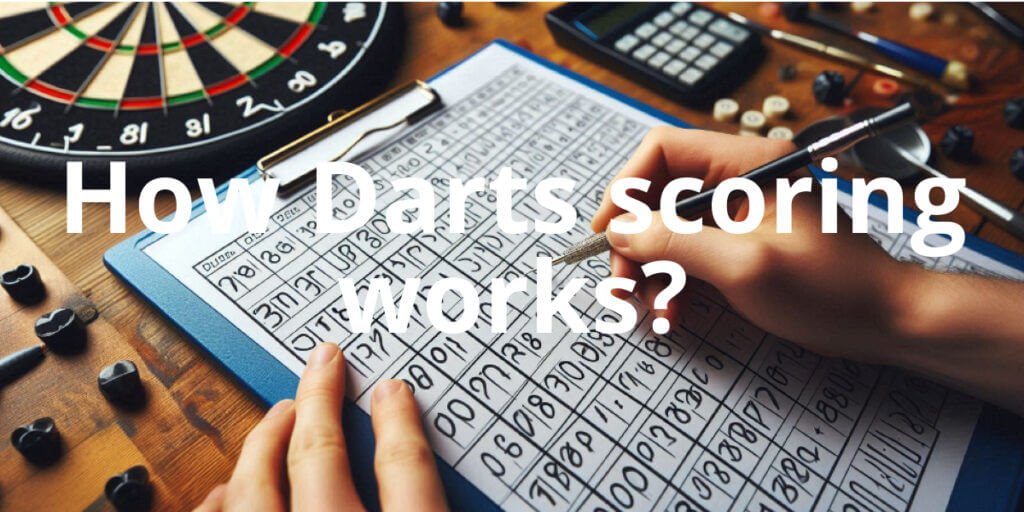When it comes to playing darts, who throws first in darts can significantly impact the outcome of a game, especially in competitive settings. Deciding who gets the advantage of the first throw is more than just a formality — it’s a crucial part of the game. For example in the best of 7 etc games, if the players always win if they start the leg – the one starting the game will eventually win.
In this article, we’ll explore the different methods and rules used to determine who throws first in darts, whether you’re playing casually with friends or competing in a professional tournament.
1. Why Is it important who throws first in Darts?
The player who throws first has a distinct advantage. In games like 501, the first player has the opportunity to set the pace, accumulate points quickly, and potentially finish the game before their opponent gets a chance to catch up. This is particularly significant in shorter matches, where the momentum from an early lead can be difficult to overcome.
The most extreme example of this could be a 9darter (a perfect darts leg). If both players would be throwing the perfect 9 throws – the one who starts will still win – the second player won’t even get a chance for the third visit.
Because of this advantage, it’s important to determine fairly and consistently who throws first in any given match. Let’s take a look at how it’s typically decided.
2. Common Methods for Deciding Who Throws First
1. Closest to the Bullseye
In most darts games, both casual and competitive, the standard method for determining who throws first is the bullseye throw-off. Here’s how it works:

- Each player throws one dart at the bullseye. Here it is important to hit the inner circle (50) as well.
- The player whose dart lands closest to the bullseye gets to throw first.
- If both players hit the bullseye or land their darts at an identical distance, they either throw again or agree to alternate who throws first in subsequent legs.
This method is used in professional tournaments like the PDC (Professional Darts Corporation) and BDO (British Darts Organization) events. It’s seen as the fairest way to determine the starting player since it’s based on skill rather than chance.
It is also the most common way to determine the first thrower in local leagues and tournaments. That is another reason why having a good bullseye throw in your arsenal will not just win you games, but it will even get you ahead before the game starts. To find different ways to practice your bullseye hitting you can read more in our article about different darts training games.
Bullseye Scoring:
Here only the bullseye matters, so if both players miss the inner/outer zone they will throw again – it does not matter who is closer to the middle.
- A direct hit on the inner bullseye (red center) counts as a 50.
- The outer bullseye (green ring) counts as a 25.
In the event both players hit the same section, for instance, both scoring 50, they will usually re-throw until one player lands closer to the bullseye.
2. Coin Toss or Other Random Methods
For casual games or league matches where players might not want to spend extra time on a bullseye throw-off, a coin toss is sometimes used to decide who goes first. This is purely based on luck and does not take skill into account.
While this method is quick and easy, it’s not commonly used in competitive environments, where the emphasis is on fairness and skill.

Another way for tournaments is how bracket decides who throws first as well – the one whos name is on top of the other will throw first. Since the bracket is generated by computer on random this method is also pretty much like a coin toss.
3. Alternate First Throwing Methods in Different Formats
Different game formats and rulesets might have specific variations on how the first throw is decided. Here are a few examples:
1. Alternate First Throwing in Best-of Matches
In some tournament settings, players alternate who throws first in each leg or set of the match. For example, if a match is played over the best of 5 legs, one player might throw first in odd-numbered legs (1, 3, 5), while the other player throws first in the even-numbered legs (2, 4).
This system ensures both players have an equal number of opportunities to throw first, reducing the overall impact of the first-throw advantage.
2. Home/Away Advantage in League Play
In local darts leagues, the home team or player may automatically get the first throw in the first leg, with subsequent legs alternating. This system balances out over the course of the match and ensures fairness for both players or teams.
Since every team gets a home and away game as well, it balances out over the two games – both will get a small advantage for their home games.
3. Throwing First After a Tie-Breaker
In some darts formats, particularly in deciding legs (such as a final leg in a best-of format), the bullseye throw-off method is used again to determine who throws first in the critical leg. This adds extra drama to matches, especially if the game is tied and everything hinges on who gets to throw first in the final round.
This is only used if the first thrower before the game was determined by coin toss or randomly given. If there is a bullseye throw before the game then there will not be another one before the deciding leg.
4. The Psychological Impact of Throwing First
When you get to throw first, it is more then just a scoring advantage in the game of darts. It gives you a psychological edge and knowing if you defend your legs then you will win the game. The enemy you are playing will feel like he has to attack more – he has to break your throw to even have a chance to win the game.
This puts more pressure on him and some players may get nervous because of that – throwing darts when you are not in perfect condition usually results in a bad throw.
The mental aspect of darts is as crucial as physical skill, and many players work hard on developing mental resilience to handle both starting and following situations. It is a good idea to practice on both of those – to read more about mental and physical aspects of darts, head over to our articles and start practicing!
5. Final Thoughts on who throws first in darts
Deciding who throws first in darts is an important aspect of the game, whether you’re playing casually or in a competitive setting. While a bullseye throw-off is the most common and fair method, other methods like coin tosses or alternating throws can be used depending on the context and to make the games go faster.
Next time you play darts, take note of how the first player is chosen — it could be the difference between a win and a loss! Just remember, no matter who throws first, with playing good and keeping a calm head, everyone can still win the game!





